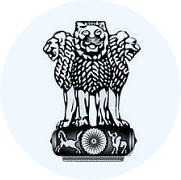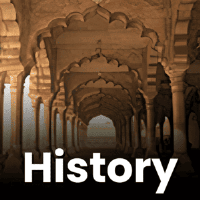UPSC Exam > UPSC Questions > Consider the following statements withreferen...
Start Learning for Free
Consider the following statements with reference to the Chalcolithic period in India:
1. Milk and dairy products were the main components of the dietary culture of the Chalcolithic culture.
2. Ganeshwar was an urban Chalcolithic site that supplied copper objects to Harappa.
Which of the statements given above is/are correct?
1. Milk and dairy products were the main components of the dietary culture of the Chalcolithic culture.
2. Ganeshwar was an urban Chalcolithic site that supplied copper objects to Harappa.
Which of the statements given above is/are correct?
- a)1 only
- b)2 only
- c)Both 1 and 2
- d)Neither 1 nor 2
Correct answer is option 'D'. Can you explain this answer?
| FREE This question is part of | Download PDF Attempt this Test |
Most Upvoted Answer
Consider the following statements withreference to the Chalcolithic pe...
The correct answer is option D) Neither 1 nor 2.
Explanation:
1. Milk and dairy products were the main components of the dietary culture of the Chalcolithic culture:
This statement is incorrect. The Chalcolithic period in India, also known as the Copper Age, was a transitional period between the Neolithic and Iron Age. It is characterized by the use of copper and stone tools and the beginning of agriculture. While the Chalcolithic people practiced agriculture and domesticated animals, there is no evidence to suggest that milk and dairy products were the main components of their dietary culture. The main crops grown during this period were wheat, barley, rice, and various pulses.
2. Ganeshwar was an urban Chalcolithic site that supplied copper objects to Harappa:
This statement is also incorrect. Ganeshwar is an archaeological site located in Rajasthan, India, and it belongs to the Ahar-Banas culture, which is a Chalcolithic culture. However, there is no evidence to suggest that Ganeshwar supplied copper objects to Harappa, which was a major urban center of the Indus Valley Civilization. The Indus Valley Civilization had its own sources of copper and was known for its advanced metallurgy, including the production of copper objects. The Chalcolithic cultures in India, including Ganeshwar, had their own local copper industry, but there is no direct evidence of trade or interaction between Ganeshwar and Harappa.
In conclusion, both statements are incorrect. The Chalcolithic culture in India did not have milk and dairy products as the main components of their dietary culture, and there is no evidence to suggest that Ganeshwar supplied copper objects to Harappa.
Explanation:
1. Milk and dairy products were the main components of the dietary culture of the Chalcolithic culture:
This statement is incorrect. The Chalcolithic period in India, also known as the Copper Age, was a transitional period between the Neolithic and Iron Age. It is characterized by the use of copper and stone tools and the beginning of agriculture. While the Chalcolithic people practiced agriculture and domesticated animals, there is no evidence to suggest that milk and dairy products were the main components of their dietary culture. The main crops grown during this period were wheat, barley, rice, and various pulses.
2. Ganeshwar was an urban Chalcolithic site that supplied copper objects to Harappa:
This statement is also incorrect. Ganeshwar is an archaeological site located in Rajasthan, India, and it belongs to the Ahar-Banas culture, which is a Chalcolithic culture. However, there is no evidence to suggest that Ganeshwar supplied copper objects to Harappa, which was a major urban center of the Indus Valley Civilization. The Indus Valley Civilization had its own sources of copper and was known for its advanced metallurgy, including the production of copper objects. The Chalcolithic cultures in India, including Ganeshwar, had their own local copper industry, but there is no direct evidence of trade or interaction between Ganeshwar and Harappa.
In conclusion, both statements are incorrect. The Chalcolithic culture in India did not have milk and dairy products as the main components of their dietary culture, and there is no evidence to suggest that Ganeshwar supplied copper objects to Harappa.
Free Test
FREE
| Start Free Test |
Community Answer
Consider the following statements withreference to the Chalcolithic pe...
- The cultures were based on the use of copper and stone implements called Chalcolithic. Technologically, the Chalcolithic stage is applied to the pre-Harappan phase. However, in various parts of India, the Chalcolithic cultures followed the Bronze Age Harappa culture. The Chalcolithic people mostly used stone and copper objects, but they also occasionally used low-grade bronze and even iron.
- The Chalcolithic people domesticated cattle, sheep, and goats, which were tethered in the courtyard. In all probability, the domesticated animals were slaughtered for food and not used for milk and dairy products. The tribal people, such as the Gonds of Bastar, believe that milk is meant only to feed young animals, and, therefore, they do not milk their cattle. Consequently, the Chalcolithic people were not able to make full use of the animals. Hence, statement 1 is not correct.
- Ganeshwar is a Chalcolithic site in Rajasthan whose deposits are ascribed to 2800–2200 BC, they, by and large, predate the mature Harappan culture. Ganeshwar principally supplied copper objects to Harappa and did not receive much from it. The Ganeshwar people partly lived on agriculture and largely on hunting. Although their principal craft was the manufacture of copper objects, they were unable to urbanize. With its microliths and other stone tools, much of the Ganeshwar culture can be considered a pre-Harappan Chalcolithic culture that contributed to the making of the mature Harappan culture. Hence, statement 2 is not correct.
Attention UPSC Students!
To make sure you are not studying endlessly, EduRev has designed UPSC study material, with Structured Courses, Videos, & Test Series. Plus get personalized analysis, doubt solving and improvement plans to achieve a great score in UPSC.

|
Explore Courses for UPSC exam
|

|
Similar UPSC Doubts
Consider the following statements withreference to the Chalcolithic period in India:1. Milk and dairy products were the maincomponents of the dietary culture of theChalcolithic culture.2. Ganeshwar was an urban Chalcolithicsite that supplied copper objects toHarappa.Which of the statements given above is/arecorrect?a)1 onlyb)2 onlyc)Both 1 and 2d)Neither 1 nor 2Correct answer is option 'D'. Can you explain this answer?
Question Description
Consider the following statements withreference to the Chalcolithic period in India:1. Milk and dairy products were the maincomponents of the dietary culture of theChalcolithic culture.2. Ganeshwar was an urban Chalcolithicsite that supplied copper objects toHarappa.Which of the statements given above is/arecorrect?a)1 onlyb)2 onlyc)Both 1 and 2d)Neither 1 nor 2Correct answer is option 'D'. Can you explain this answer? for UPSC 2024 is part of UPSC preparation. The Question and answers have been prepared according to the UPSC exam syllabus. Information about Consider the following statements withreference to the Chalcolithic period in India:1. Milk and dairy products were the maincomponents of the dietary culture of theChalcolithic culture.2. Ganeshwar was an urban Chalcolithicsite that supplied copper objects toHarappa.Which of the statements given above is/arecorrect?a)1 onlyb)2 onlyc)Both 1 and 2d)Neither 1 nor 2Correct answer is option 'D'. Can you explain this answer? covers all topics & solutions for UPSC 2024 Exam. Find important definitions, questions, meanings, examples, exercises and tests below for Consider the following statements withreference to the Chalcolithic period in India:1. Milk and dairy products were the maincomponents of the dietary culture of theChalcolithic culture.2. Ganeshwar was an urban Chalcolithicsite that supplied copper objects toHarappa.Which of the statements given above is/arecorrect?a)1 onlyb)2 onlyc)Both 1 and 2d)Neither 1 nor 2Correct answer is option 'D'. Can you explain this answer?.
Consider the following statements withreference to the Chalcolithic period in India:1. Milk and dairy products were the maincomponents of the dietary culture of theChalcolithic culture.2. Ganeshwar was an urban Chalcolithicsite that supplied copper objects toHarappa.Which of the statements given above is/arecorrect?a)1 onlyb)2 onlyc)Both 1 and 2d)Neither 1 nor 2Correct answer is option 'D'. Can you explain this answer? for UPSC 2024 is part of UPSC preparation. The Question and answers have been prepared according to the UPSC exam syllabus. Information about Consider the following statements withreference to the Chalcolithic period in India:1. Milk and dairy products were the maincomponents of the dietary culture of theChalcolithic culture.2. Ganeshwar was an urban Chalcolithicsite that supplied copper objects toHarappa.Which of the statements given above is/arecorrect?a)1 onlyb)2 onlyc)Both 1 and 2d)Neither 1 nor 2Correct answer is option 'D'. Can you explain this answer? covers all topics & solutions for UPSC 2024 Exam. Find important definitions, questions, meanings, examples, exercises and tests below for Consider the following statements withreference to the Chalcolithic period in India:1. Milk and dairy products were the maincomponents of the dietary culture of theChalcolithic culture.2. Ganeshwar was an urban Chalcolithicsite that supplied copper objects toHarappa.Which of the statements given above is/arecorrect?a)1 onlyb)2 onlyc)Both 1 and 2d)Neither 1 nor 2Correct answer is option 'D'. Can you explain this answer?.
Solutions for Consider the following statements withreference to the Chalcolithic period in India:1. Milk and dairy products were the maincomponents of the dietary culture of theChalcolithic culture.2. Ganeshwar was an urban Chalcolithicsite that supplied copper objects toHarappa.Which of the statements given above is/arecorrect?a)1 onlyb)2 onlyc)Both 1 and 2d)Neither 1 nor 2Correct answer is option 'D'. Can you explain this answer? in English & in Hindi are available as part of our courses for UPSC.
Download more important topics, notes, lectures and mock test series for UPSC Exam by signing up for free.
Here you can find the meaning of Consider the following statements withreference to the Chalcolithic period in India:1. Milk and dairy products were the maincomponents of the dietary culture of theChalcolithic culture.2. Ganeshwar was an urban Chalcolithicsite that supplied copper objects toHarappa.Which of the statements given above is/arecorrect?a)1 onlyb)2 onlyc)Both 1 and 2d)Neither 1 nor 2Correct answer is option 'D'. Can you explain this answer? defined & explained in the simplest way possible. Besides giving the explanation of
Consider the following statements withreference to the Chalcolithic period in India:1. Milk and dairy products were the maincomponents of the dietary culture of theChalcolithic culture.2. Ganeshwar was an urban Chalcolithicsite that supplied copper objects toHarappa.Which of the statements given above is/arecorrect?a)1 onlyb)2 onlyc)Both 1 and 2d)Neither 1 nor 2Correct answer is option 'D'. Can you explain this answer?, a detailed solution for Consider the following statements withreference to the Chalcolithic period in India:1. Milk and dairy products were the maincomponents of the dietary culture of theChalcolithic culture.2. Ganeshwar was an urban Chalcolithicsite that supplied copper objects toHarappa.Which of the statements given above is/arecorrect?a)1 onlyb)2 onlyc)Both 1 and 2d)Neither 1 nor 2Correct answer is option 'D'. Can you explain this answer? has been provided alongside types of Consider the following statements withreference to the Chalcolithic period in India:1. Milk and dairy products were the maincomponents of the dietary culture of theChalcolithic culture.2. Ganeshwar was an urban Chalcolithicsite that supplied copper objects toHarappa.Which of the statements given above is/arecorrect?a)1 onlyb)2 onlyc)Both 1 and 2d)Neither 1 nor 2Correct answer is option 'D'. Can you explain this answer? theory, EduRev gives you an
ample number of questions to practice Consider the following statements withreference to the Chalcolithic period in India:1. Milk and dairy products were the maincomponents of the dietary culture of theChalcolithic culture.2. Ganeshwar was an urban Chalcolithicsite that supplied copper objects toHarappa.Which of the statements given above is/arecorrect?a)1 onlyb)2 onlyc)Both 1 and 2d)Neither 1 nor 2Correct answer is option 'D'. Can you explain this answer? tests, examples and also practice UPSC tests.

|
Explore Courses for UPSC exam
|

|
Suggested Free Tests
Signup for Free!
Signup to see your scores go up within 7 days! Learn & Practice with 1000+ FREE Notes, Videos & Tests.
























